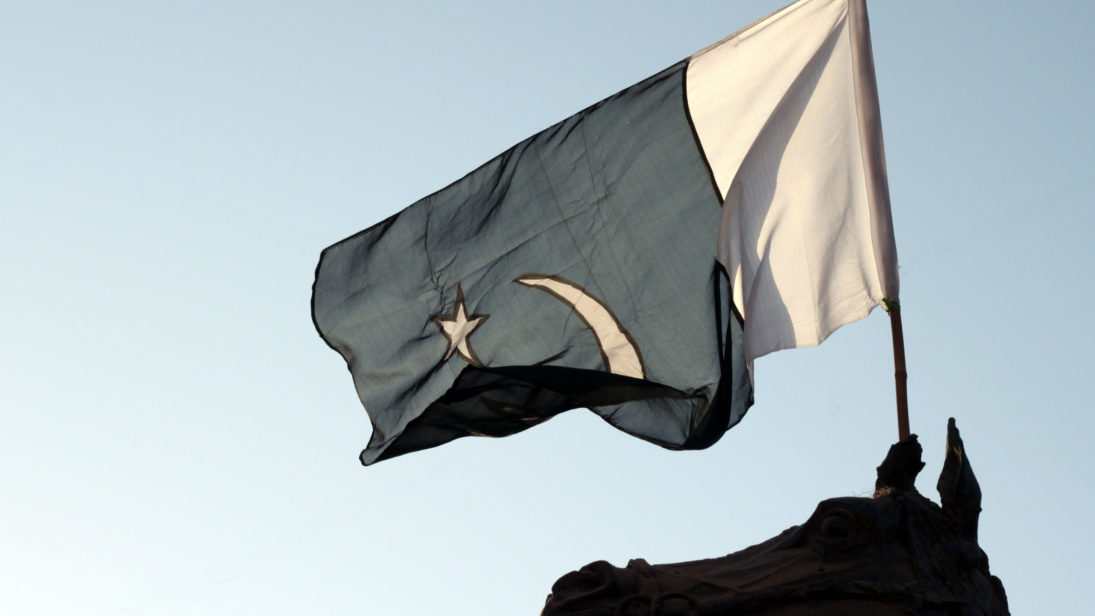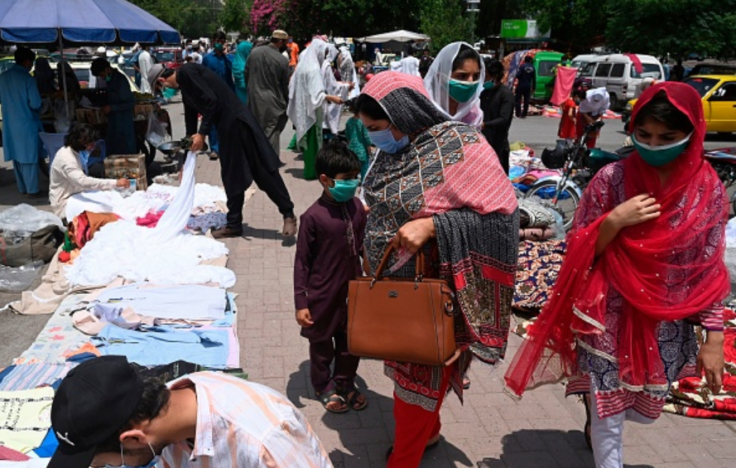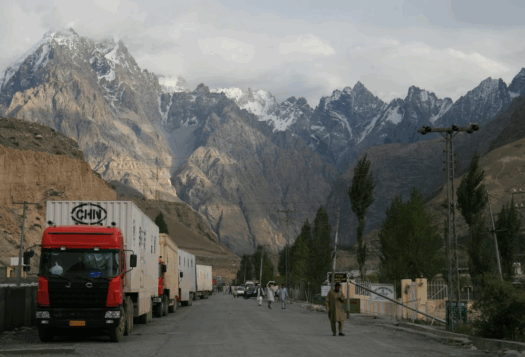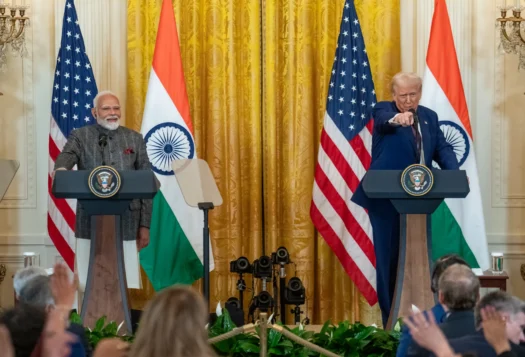
In July 2019, Pakistan started its macroeconomic adjustments under the IMF bailout program of USD $6 billion over three years to tackle its twin (current account and fiscal) deficit problem. In the past year, strict austerity measures attached to the IMF bailout package have contributed to contractions in the manufacturing industry, increasing unemployment, and inflation rising into the double digits. The spread of coronavirus has further delayed the recovery prospects of an ailing economy and emphasized gaps in the country’s health sector. In these challenging times instead of prioritizing government spending on the health sector and providing economic relief, the Pakistan Tehreek-e-Insaf (PTI) government’s recently released budget has set ambitious revenue targets and made cuts in the government expenditure to comply with the IMF’s austerity measures, which is likely to do little to alleviate economic pressures for the majority of Pakistan’s population.
The Economic Impact of the IMF Bailout
The severe austerity measures such as heavy taxation, rupee devaluation, and reduced government expenditure taken under the IMF program have helped reduce Pakistan’s current account and fiscal deficit but at a heavy cost of diminished economic growth. From July 2019 to March 2020, Pakistan’s current account deficit decreased by 73 percent to USD $2.8 billion, however this was mainly due to the massive depreciation of the rupee which led to a fall in import demand and a meager increase in exports—reducing the trade deficit by 31 percent. As expected, however, the GDP growth rate was projected at 2.4 percent for 2020 even before COVID-19 hit the country. Although in February 2020, Pakistan’s exports had shown a 3.6 percent growth when compared to the previous year, this sharply declined after COVID-19. Although the fiscal deficit fell from 5 percent to 3.8 percent of the GDP from July 2019 to March 2020, the government failed to meet the revenue targets for the fiscal year 2020 and public debt has increased to 88 percent of GDP.
Instead of prioritizing government spending on the health sector and providing economic relief, the PTI government’s recently released budget has set ambitious revenue targets and made cuts in the government expenditure to comply with the IMF’s austerity measures, which is likely to do little to alleviate economic pressures for the majority of Pakistan’s population.
The policies taken by the PTI government under the IMF bailout program such as increasing interest rates, raising taxes, and rupee depreciation have also had a substantial negative impact on the business community and the public. Following the IMF conditions, in order to generate revenue to reduce the fiscal deficit, the government increased taxes and energy prices resulting in higher inflation. In January, the State Bank of Pakistan increased interest rates to 13.25 percent with an aim of bringing inflation down, however, this increased the cost of borrowing for investors. The large-scale manufacturing sector, especially textile, petroleum and automobile manufacturing were hit hard by increased production costs, interest rates, and taxes, and the sector declined by 5.4 percent from July 2019 to March 2020. By January 2020, inflation had increased to 14.6 percent mainly due to a surge in food prices putting a greater economic pressure on the poor and working class. As Pakistan entered the new year, COVID-19 ultimately exacerbated many of the economic challenges it was already facing.
Pakistan’s Economy After COVID-19
As countries across the world imposed lockdowns and global economic activity came to a halt, Pakistan’s GDP shrank by nearly USD $18 billion and per capita income fell by USD $100 in Fiscal Year 2019-20. Areas that had been showing some positive trends in 2019, such as remittances and a slight growth in exports, fell sharply with COVID-19. While remittances—funds send back to Pakistan by citizens working abroad—increased by 2.7 percent from July 2019 to May 2020 mainly due to the government’s increased efforts under the Financial Action Task Force (FATF) to encourage sending funds through proper channels, by May 2020 remittances were nearly 20 percent less than they had been in May of the previous year. Pakistan’s exports, meanwhile, fell by 54.2 percent when comparing April 2019 to April 2020. COVID-19 has also caused supply side disruptions, especially for industries that rely heavily on imported goods. Interest rates that had been raised as part of the IMF package were reduced by 5.25 percent to tackle with the economic shocks due to coronavirus, however, this led to a flight in “hot money”—short-term investments between markets meant to make a profit on interest or exchange rates—as foreign investors pulled out more than USD $1.28 billion in March.

Already facing high levels of unemployment, COVID-19 further pushed the masses below the poverty line as millions face fears of job loss. The manufacturing sector that was barely surviving due to high production costs and taxes in the post-IMF bailout package has faced new challenges under COVID-19 lockdowns. Although the drop in international oil prices may have eased some of the inflationary pressure, however, instead of giving relief to the broader population the PTI government has increased oil prices to generate revenue, which was linked to past rises in inflation. Thus far, the PTI government has responded to the growing insecurity among Pakistan’s population by announcing a USD $7.5 billion economic relief in March of this year which also includes a stimulus package to extend the government’s already existing social safety net, Ehsaas, by providing financial assistance to poor households under the newly launched Ehsaas Emergency Cash program in order to deal with the socio-economic impact of COVID-19.
However, in Pakistan’s recent budget, only USD $151 million has been allocated to health. As the number of COVID-19 cases in Pakistan has crossed 240,000 with more than 5,000 deaths, there is an immense pressure on Pakistan’s poor and overburdened health infrastructure as hospitals are already working at full capacity and dealing with limited medical equipment such as ventilators and Personal Protective Equipment (PPE). COVID-19 has also reversed the development gains achieved in the last decade. The government needs to not only allocate funds to immediate short term cash transfer programs but also pay attention to improving the health infrastructure and creating job opportunities in order to tackle the longer-term socioeconomic impact of COVID-19.
Pakistan’s Budget and Future Economic Outlook
According to the IMF’s projections, Pakistan’s economy could experience a negative GDP growth rate of 1.5 percent in Fiscal Year 2020. Unemployment is also expected to rapidly increase with projections of 6.65 million people becoming unemployed in this fiscal year, with the approximately 27.3 million workers working in Pakistan’s informal sector among those most at risk for losing their source of income. Migrants who lost their jobs in host countries are also now returning to Pakistan, further increasing the unemployment rate and adding pressure to the labor market. Prime Minister Imran Khan has been successful in getting debt relief of around USD $2 billion, however, it needs to be considered that the debt payment has not been waived, but delayed to be paid at a later date.
According to the IMF’s projections, Pakistan’s economy could experience a negative GDP growth rate of 1.5 percent in Fiscal Year 2020.
The recent budget announced by the government further does not provide relief to the general public. The PTI government has set ambitious targets amidst a pandemic including a target of 2.1 percent GDP growth and USD $30.22 billion revenue collection—25 percent more than was collected last year. The revenue targets seem unrealistic as economic activity and demand has contracted substantially due to the pandemic and as the government has given tax relief to the real estate and the construction sector in an effort to create jobs for daily wage earners. A significant portion (41 percent) of the budget has been allocated to debt servicing. Despite the ongoing economic crunch and a pandemic, defense expenditure has been increased by 11.8 percent. The federal development budget, however, has been cut to USD $3.94 billion from USD $4.2 billion, which is not enough to tackle the issue of growing unemployment in the country. Although the PTI has a number of constraints including external debts and the current economic crisis, the cuts to the development budget are sure to be felt as Pakistan continues to face the repercussions of the global pandemic.
In the coming months, the current account and fiscal deficits are likely to continue increasing as exports and remittances fall and less revenue is generated due to slowed economic activity. The decrease in household incomes from growing unemployment, high inflation, and lower remittances will further reduce the aggregate demand necessary for bringing an economy out of a recession by stimulating economic activity. While the government has been significantly constrained with an inherited balance-of-payments crisis, the new budget indicates a missed opportunity to reprioritize and focus on health and development as the country suffers from the economic costs of COVID-19.
***
Click here to read this article in Urdu.
Image 1: Shahzeb Younas via Flickr
Image 2: Aamir Qureshi/AFP via Getty Images


